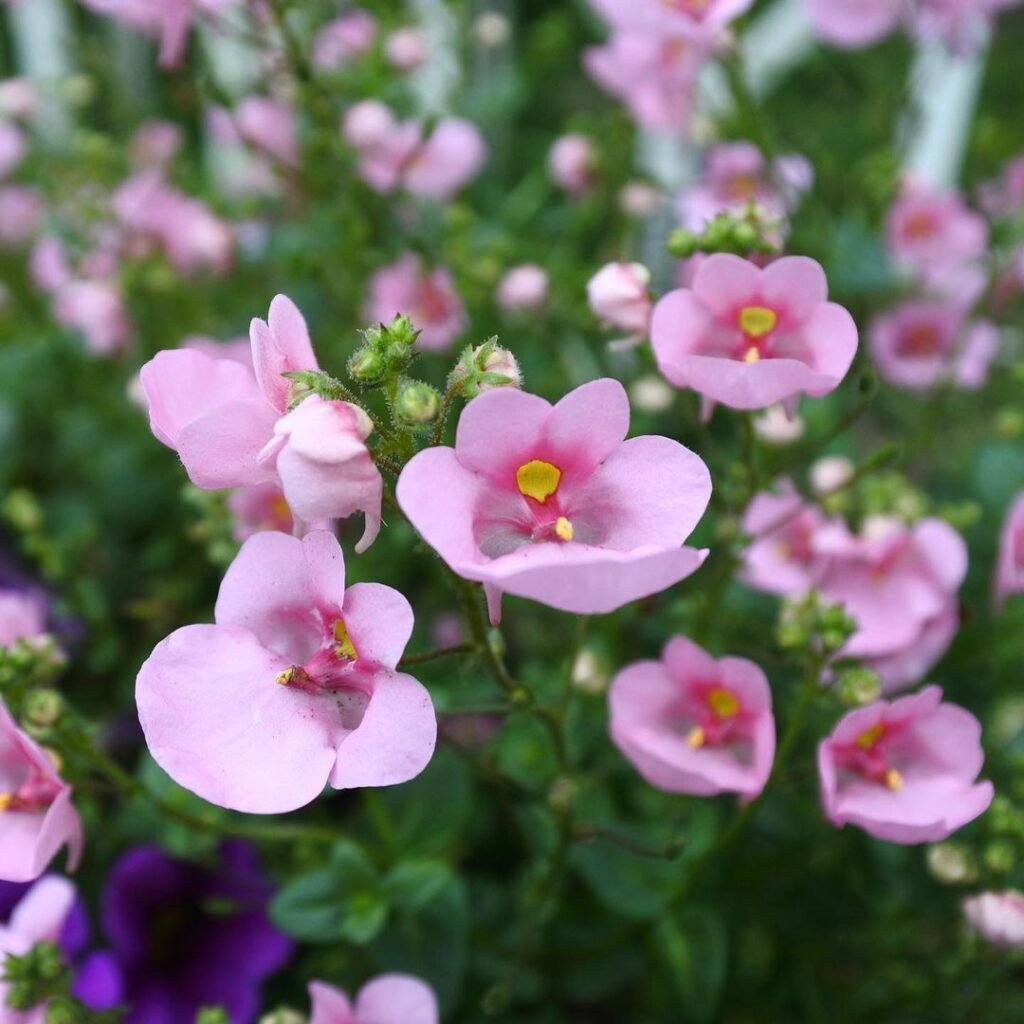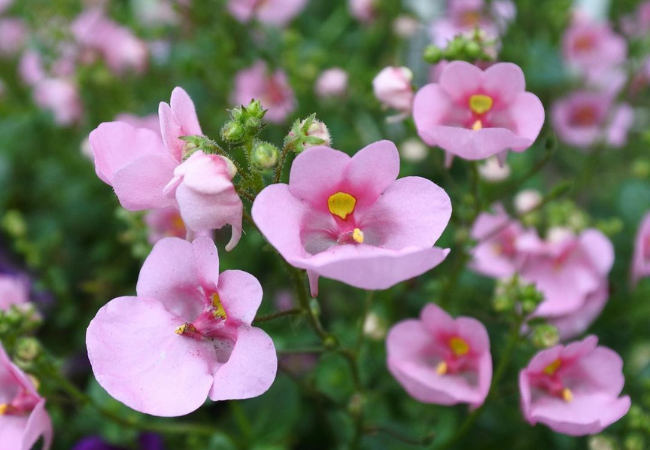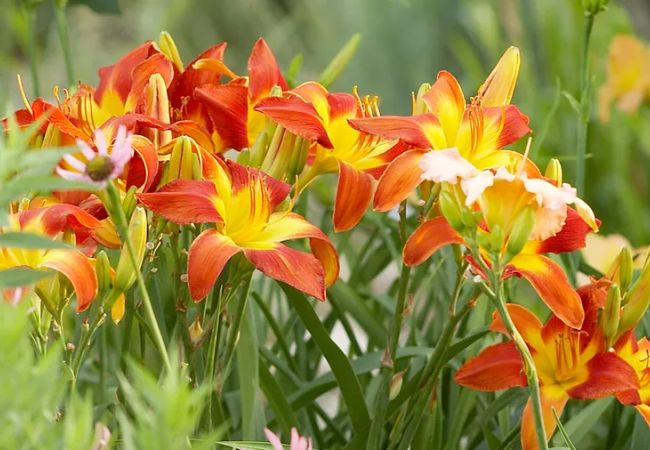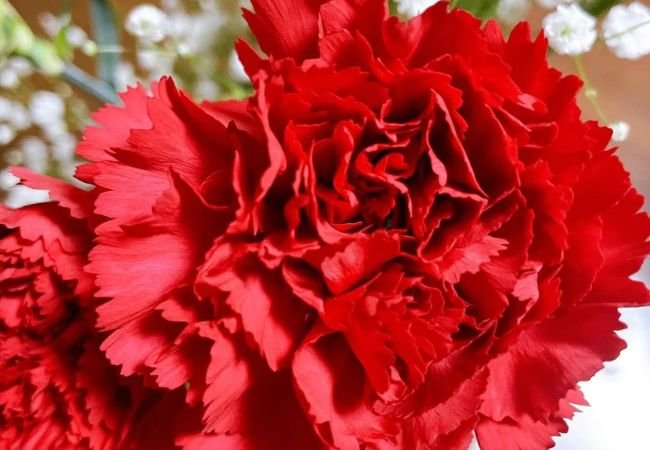Discover the charming Diascia flower – learn how to grow, care for and enjoy these delightful blooms in your garden. Perfect for USA gardeners looking to add a touch of whimsy to their outdoor spaces.
Diascia, often called twinspur, is a lovely flower that’s becoming more popular in USA gardens. These small, colorful blooms can brighten up any space with their cheerful appearance. Let’s explore this delightful plant and learn how to grow it successfully.
Here’s an easy and verified chart for Diascia:
| Category | Details |
|---|---|
| Botanical Name | Diascia spp. |
| Common Name | Twinspur |
| Plant Type | Herbaceous perennial |
| Hardiness Zone | Zones 7-10 (typically grown as an annual in colder zones) |
| Sun Exposure | Full sun to part shade |
| Soil Type | Well-draining, fertile soil |
| Watering Needs | Average; prefers consistently moist soil |
| Growth Habit | Spreading, mounding |
| Height/Spread | 6-12 inches tall, spread of 12-18 inches |
| Special Features | Delicate, tubular flowers in shades of pink, purple, or white; blooms profusely from spring to fall; attractive to butterflies; deer resistant |
What is Diascia?

Diascia is a genus of plants in the figwort family. Native to southern Africa, these flowers have adapted well to gardens in cooler climates. They get their nickname “twinspur” from the two downward-pointing spurs on the back of each flower.
Types of Diascia
There are several species and cultivars of Diascia, including:
- Diascia barberae: One of the most common species
- Diascia vigilis: Known for its upright growth
- Diascia ‘Flying Colors’: A popular hybrid series
To learn more about Diascia varieties, visit the USDA’s Natural Resources Conservation Service plant database.
Growing Diascia
Diascia is relatively easy to grow, making it a great choice for both new and experienced gardeners.
Soil and Sun
- Prefer well-draining soil
- Thrive in full sun to partial shade
- Add organic matter to improve soil quality
For soil improvement tips, check out the USDA’s Soil Health resources.
Planting and Care
- Plant in spring after the last frost
- Space plants about 8-12 inches apart
- Water regularly, but don’t overwater
- Pinch back stems to encourage bushier growth
Learn more about proper watering techniques from the EPA’s WaterSense program.
Pests and Problems
Diascia is generally pest-resistant, but may face issues like:
- Aphids
- Powdery mildew in humid conditions
- Root rot if soil is too wet
For pest management strategies, visit the Integrated Pest Management page from the EPA.
Uses of Diascia
- Garden Borders: Perfect for edging flower beds
- Container Plants: Great for pots and hanging baskets
- Attracting Pollinators: Bees and butterflies love them
Learn about creating pollinator-friendly gardens from the U.S. Forest Service.
Diascia Colors and Meanings
Diascia comes in various colors, including
- Pink
- Coral
- Apricot
- White
- Red
While Diascia doesn’t have specific symbolic meanings like some flowers, its cheerful appearance is often associated with joy and friendliness.
Explore flower symbolism in art at the Smithsonian American Art Museum.
Growing Diascia in Different US Regions
- Northeast: Grow as annuals or bring indoors for winter
- Midwest: Plant in spring for summer-long blooms
- South: Use as cool-season annuals in fall and spring
- West: Can be grown as perennials in mild coastal areas
For region-specific gardening advice, consult the USDA’s Plant Hardiness Zone Map.
Diascia as Cut Flowers
While not typically used in bouquets, Diascia can make charming additions to small floral arrangements. Their delicate stems and bright colors can add a whimsical touch to your indoor decor.
For more information on cut flower care, visit the University of Maryland Extension.
Propagating Diascia
You can easily grow more Diascia plants through:
- Seeds
- Cuttings
- Division of mature plants
Learn more about plant propagation from the Cooperative Extension System.
Diascia is a delightful flower that can add charm and color to any garden. Whether you’re planting them in borders, containers or as groundcover, these cheerful blooms are sure to bring a smile to your face. With their easy care requirements and long blooming period, Diascias are a great choice for gardeners of all skill levels across the USA.
For more gardening resources, visit the National Agricultural Library’s Gardening Information page.
Remember, gardening is a journey of discovery and joy. Don’t be afraid to experiment with Diascia in different parts of your garden. With a little care and attention, you’ll soon be enjoying these lovely flowers throughout the growing season.
For more gardening tips and plant care guides, visit usagardenhub.com.






